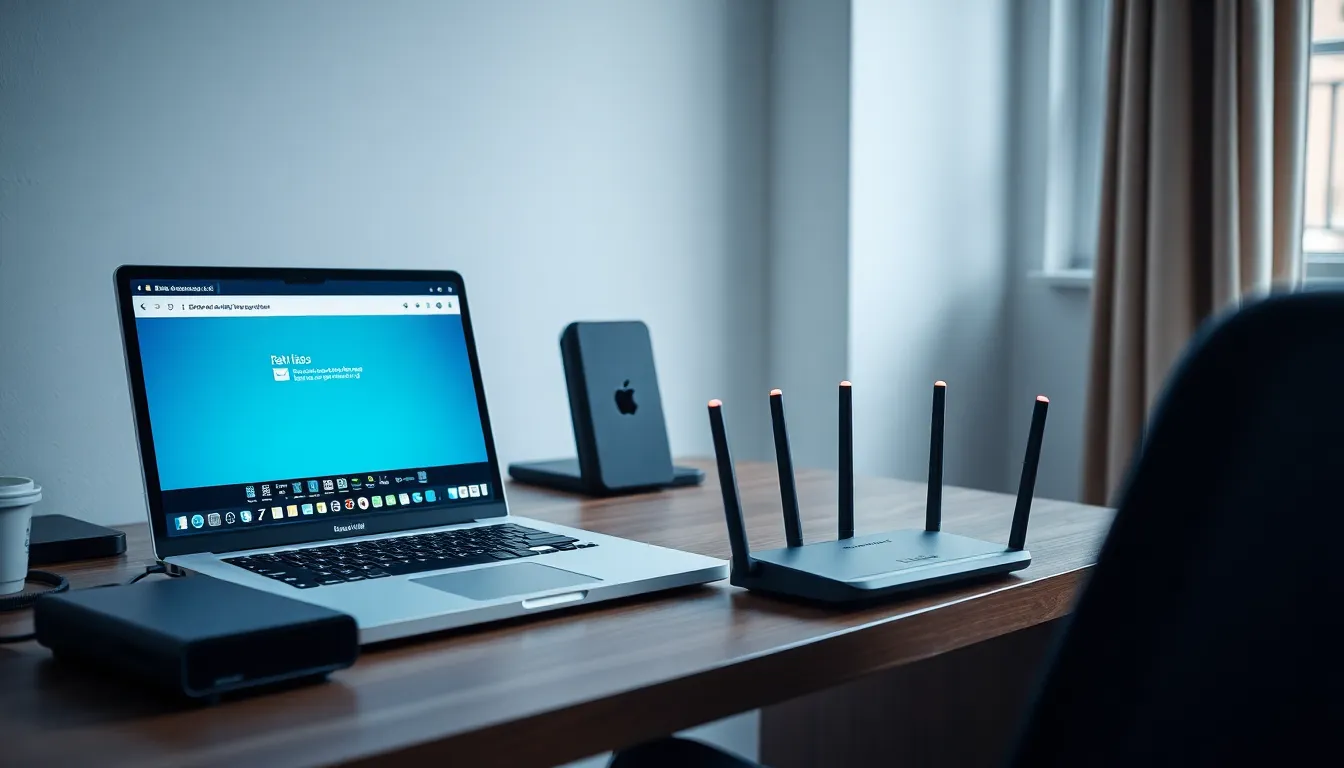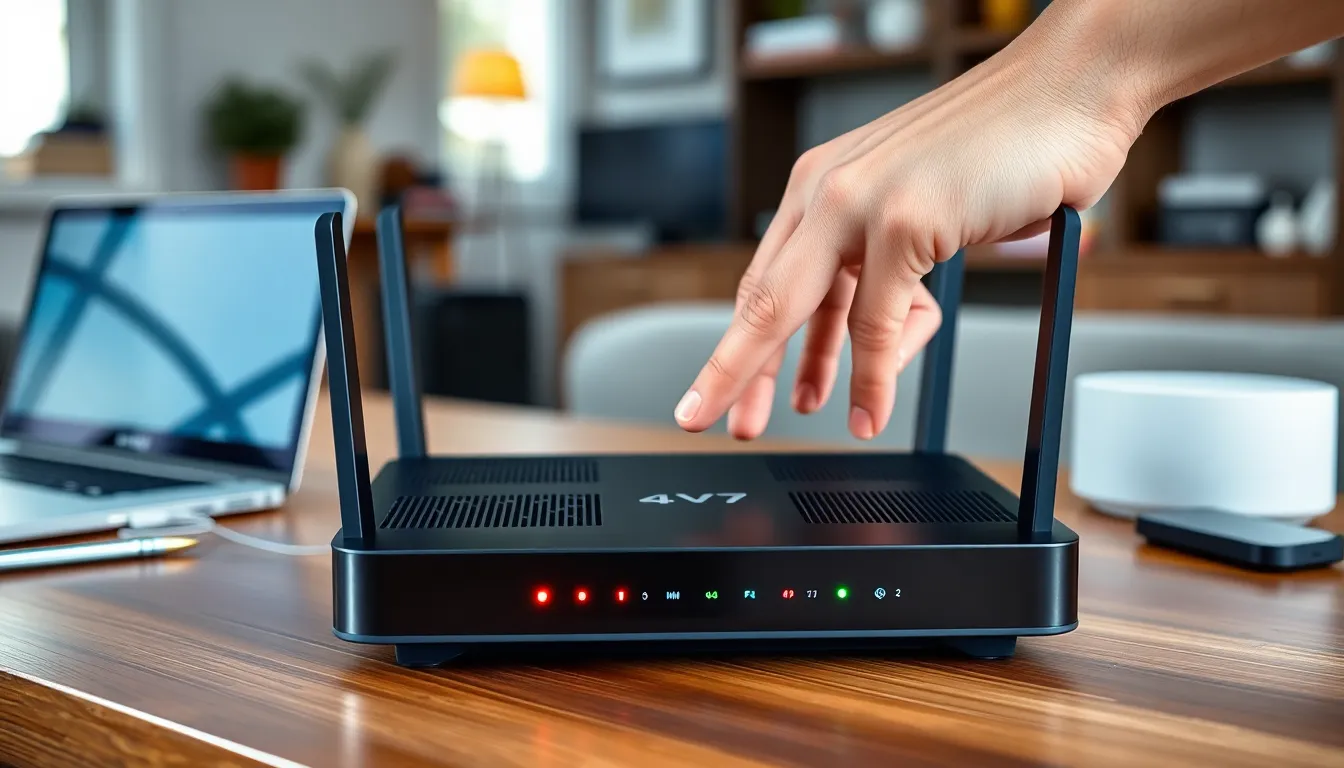In the vast universe of IP addresses, 192.168.1.18090 stands out like a quirky character in a sitcom. While most people might not think twice about their router’s address, understanding this little number can unlock a treasure trove of network management secrets. Whether you’re troubleshooting connectivity issues or simply curious about your home network, this address is your backstage pass to the digital world.
Imagine navigating your home network with the confidence of a seasoned tech guru. With 192.168.1.18090, you can take control, tweak settings, and even impress your friends with your newfound knowledge. So grab a cup of coffee, sit back, and let’s dive into the fascinating world of IP addresses. Who knew networking could be this entertaining?
Table of Contents
ToggleOverview of 192.168.1.18090
192.168.1.18090 serves as a unique identifier within a local network. This address falls within the private IP address range, typically used by routers and devices in home networks. Users often encounter variations of this address when configuring network settings or troubleshooting connectivity issues.
The first part, 192.168.1, designates a private network, and the latter segment, 18090, represents a specific device or service on that network. Computers, printers, and smart home devices commonly utilize such addresses to communicate efficiently. Recognizing these components enhances users’ understanding of their home networks.
Managing devices with such specific addresses often simplifies troubleshooting processes. For instance, if a device exhibits connectivity problems, knowing its IP can direct users to relevant configuration settings. It’s crucial to enter the correct address when accessing a router’s admin panel, ensuring smooth configurations and network management.
Address conflicts can occur if multiple devices share the same IP. Such conflicts lead to connectivity issues, making it essential for network administrators to monitor and assign distinct addresses. Tools like network scanners provide insights into active IP addresses, aiding users in effective management.
Understanding 192.168.1.18090 promotes better control over personal networks. Awareness of device addresses can lead to improved security protocols as well. Users can implement measures such as IP filtering to safeguard their networks against unauthorized access, further enhancing overall network reliability.
Common Uses of 192.168.1.18090

The IP address 192.168.1.18090 has various applications in both home and business environments. Understanding these uses can enhance network management.
Home Networking
Home networking relies heavily on 192.168.1.18090 for device connectivity. Users often access this address to configure routers and manage connected devices. Setting up smart home gadgets frequently involves entering this IP address into a web browser. Network security also benefits from this address, enabling users to implement measures like IP filtering. Identifying and resolving connectivity issues becomes easier when leveraging this specific address. Additionally, home users can manage parental controls and quality of service settings via the router interface.
Business Applications
In business settings, 192.168.1.18090 plays a crucial role in maintaining efficient networks. Organizations often assign this IP address to devices within secure intranets. Managing internal communications requires accessing this address for configuration and monitoring. Streamlined device management improves productivity, allowing seamless collaboration among employees. Using this IP address facilitates remote access for staff working off-site. Businesses also create subnets within this private IP range to optimize network traffic and enhance security protocols.
Accessing 192.168.1.18090
Accessing 192.168.1.18090 enables users to manage their network settings effectively. Users must enter this IP address in their web browser’s address bar to initiate the connection.
Step-by-Step Guide
- Open a web browser, such as Chrome or Firefox.
- Type 192.168.1.18090 into the address bar and hit Enter.
- Log in with the appropriate username and password. Default credentials often include ‘admin’ for both fields.
- Navigate through the interface to adjust settings like Wi-Fi configurations, security protocols and device management.
- Save any changes made to ensure they take effect on the network.
Troubleshooting Connection Issues
Addressing connection issues is essential for maintaining a stable network. Check if the device connecting to this IP address is on the same local network. Confirm that the IP address entered is accurate with no typographical errors.
Restart the router to refresh network connections if problems persist. Inspect for IP address conflicts among devices. Use network scanning tools to identify devices using the same address. If access remains difficult after these steps, consult the router’s user manual or the manufacturer’s support site for additional guidance.
Security Considerations
Understanding security around 192.168.1.18090 is crucial for network integrity. Unauthorized access threats can compromise personal information and connected devices. Implementing strong passwords for router admin panels reduces the risk of breaches.
Regular firmware updates for routers enhance protection against vulnerabilities. Ensuring the latest security patches are installed strengthens defenses against potential exploits. Firewalls can serve as additional barriers preventing unauthorized access to the local network.
Consider enabling IP filtering to restrict devices that can communicate with the router. This measure can limit exposure to unknown or untrusted devices. Monitoring connected devices regularly helps identify any unauthorized access attempts.
Configuring a guest network is a sound strategy for maintaining security. This setup separates personal devices from visitors, reducing the chance of interference or intrusion. Employing Virtual Private Networks (VPNs) adds another layer of security, especially for remote access.
Network scanners provide valuable insights into associated devices and potential vulnerabilities. They enable the identification of IP conflicts and unauthorized connections proactively. Regularly reviewing these aspects contributes to a safer network environment.
Users should also restrict the DHCP range to limit the number of devices obtaining IP addresses from the router. This practice lowers the risk of IP conflicts and unauthorized connections. Taking these precautionary steps leads to a more robust and secure networking experience.
Understanding the significance of 192.168.1.18090 empowers users to take control of their networks. By recognizing its role in device connectivity and network management, individuals can troubleshoot issues effectively and enhance security protocols.
With the right knowledge, managing home and business networks becomes a seamless process. Implementing security measures and monitoring connected devices ensures a reliable and safe networking experience. As users explore the intricacies of IP addresses, they’ll find that a well-managed network leads to improved efficiency and peace of mind.



